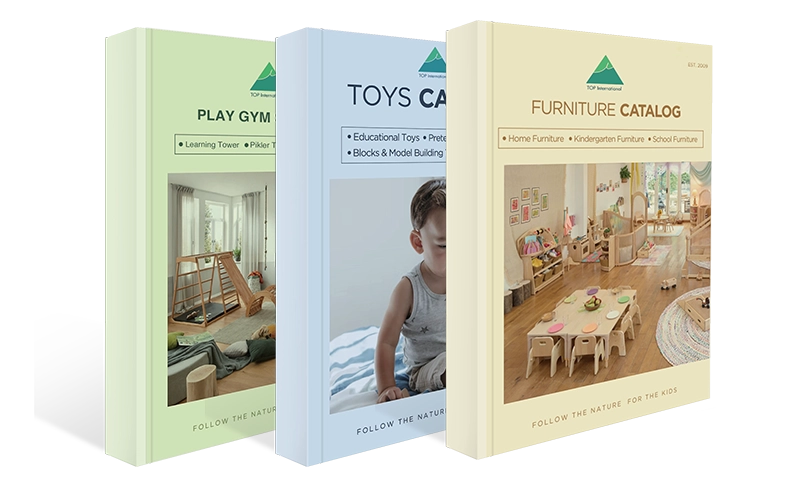Is your child struggling to tell the difference between similar sounds like “b” and “d” or “ch” and “sh”? Do they often misunderstand spoken instructions, even in quiet environments? Are you concerned that poor Auditory Discrimination may delay their reading or speaking abilities and hurt their classroom performance?
Auditory Discrimination is a foundational listening skill that allows children to recognize and differentiate between sounds in language. Enhancing this ability not only strengthens speech clarity but also improves reading comprehension, memory, and attention span. With strong auditory processing, children follow directions better, express themselves more clearly, and adapt more confidently in learning environments.
There are proven, practical ways to strengthen a child’s Auditory Discrimination—many of which can be done at home or in the classroom. Let’s explore them together.

What is Auditory Discrimination?
Auditory discrimination refers to the brain’s ability to recognize and differentiate between distinct sounds. This includes noticing subtle differences between phonemes (the most minor units of sound in speech), such as distinguishing between the sounds of “b” and “p” or “f” and “v.” For example, if a child can’t hear the difference between “cat” and “cap,” they may struggle with spelling, reading comprehension, or verbal communication.
The Science Behind Auditory Discrimination
From a neurological standpoint, auditory discrimination involves the brain’s auditory cortex and language centers. When children hear sounds, their brains must quickly process and assign meaning. If this process is inefficient or underdeveloped, the child might listen to it correctly but fail to understand or react appropriately. It’s not about hearing loss—it’s about the brain’s ability to interpret what it hears.
Auditory discrimination is part of the more prominent family of auditory processing skills, which also includes:
- Auditory memory – the ability to remember what you hear
- Auditory figure-ground discrimination – the ability to focus on specific sounds in noisy environments
- Auditory sequencing – recognizing the order of sounds or words

Signs of Weak Auditory Discrimination Skills
Children with poor auditory discrimination skills may exhibit:
- Difficulty following multi-step directions
- Confusing similar-sounding words
- Delayed speech development
- Mispronunciation of common words
- Trouble learning letter sounds or reading aloud
These challenges often lead to frustration in school, especially during early literacy instruction. The good news is that the proper support can significantly improve these skills.
Importance of Auditory Discrimination
Auditory discrimination is essential for developing clear speech, strong language comprehension, and successful academic performance. It allows children to differentiate similar sounds, follow instructions, and become proficient readers.
How It Affects Language and Literacy
Phonemic awareness—the ability to hear and manipulate sounds in words—is directly tied to auditory discrimination. Without it, a child may struggle to:
- Learn to read phonetically
- Understand rhymes or syllables
- Spell accurately
- Detect errors in spoken or written language
Poor auditory discrimination can also affect vocabulary acquisition. If a child cannot distinguish between words like “ship” and “sheep,” they may misunderstand what’s being taught or communicated.
The Social Impact
Aside from academic hurdles, children with weak auditory discrimination skills may feel isolated. They might:
- Avoid group conversations
- Misinterpret jokes or sarcasm
- Become frustrated or withdrawn
- Develop behavioral issues out of confusion or overwhelm
Social-emotional health is closely tied to communication. Boosting auditory discrimination doesn’t just help in the classroom—it enhances friendships, confidence, and family interactions.
Benefits of Strengthening Auditory Discrimination
Stronger memory and concentration skills
Improved reading fluency and comprehension
Clearer speech production
Better academic performance
Increased confidence in social situations

Signs Your Child May Have Weak Auditory Discrimination
As a parent or kindergarten educator, it’s essential to recognize the early signs of weak auditory discrimination, especially during the critical language development years between ages 2 and 6. This auditory skill is what allows children to differentiate between sounds, syllables, and phonemes (the smallest units of sound in language). When this ability is underdeveloped, it can lead to a range of challenges, from speech delays to learning difficulties in reading and comprehension.
One of the most common signs is confusion between similar-sounding words or letters. For example, a child may mix up “bat” and “pat” or hear “cat” when someone says “cap.” These errors aren’t just cute mispronunciations—they are indicators that the child’s brain is not processing auditory information.
Another red flag is difficulty following verbal instructions, especially in group environments like the classroom. If a child frequently asks for repetition or seems to misunderstand tasks that were clearly explained, this could signal a processing gap. It’s not about intelligence—it’s about how their brain decodes what they hear.
You may also notice delayed speech development. Children with auditory discrimination issues often struggle to reproduce sounds correctly because they don’t hear the differences clearly in the first place. As a result, they may avoid speaking or develop unusual speech patterns that persist longer than expected.
Other behavioral signs include frequent daydreaming, inattentiveness during storytime, or poor participation in phonics activities. These kids may seem distracted, but the root issue may be auditory, not visual or behavioral.
If you recognize several of these signs in your child or student, it’s worth taking proactive steps. Weak auditory discrimination is a developmental delay, not a permanent disability, and with targeted support, many children can catch up quickly.
Key Benefits of Strengthening Auditory Discrimination
Strengthening a child’s auditory discrimination is one of the most impactful steps we can take to support their early learning and long-term academic success. While it may seem like a small skill—simply telling sounds apart—it plays a foundational role in language, communication, and literacy.
One of the most direct benefits is clearer speech development. When children can accurately hear differences between sounds like /b/ and /d/ or /ch/ and /sh/, they can replicate those sounds more confidently when speaking. This leads to better pronunciation, fewer speech errors, and greater self-assurance when expressing oneself.
Another critical benefit is reading readiness. Auditory discrimination is the gateway to phonemic awareness—the ability to recognize and manipulate the sounds that make up words. Without strong sound differentiation, children may struggle with phonics, which affects their ability to decode and understand words while reading. In other words, the path to strong reading starts with strong listening.
Improved listening and comprehension are also significant benefits. Children with refined auditory discrimination are more capable of following multi-step instructions, understanding classroom discussions, and processing new vocabulary. This makes them more confident participants in group settings and less reliant on repeated explanations.
There are even social-emotional benefits. A child who understands spoken language is less likely to feel frustrated or left out. They can engage more effectively in conversations, pick up on tone and emotion, and develop stronger peer relationships. Better communication reduces anxiety and builds confidence in both academic and social environments.
From a long-term perspective, auditory discrimination is also linked to better memory, attention, and problem-solving. These cognitive skills all rely on the brain’s ability to organize, store, and retrieve verbal information efficiently. Strengthening auditory skills lays a neurological foundation that supports all future learning.
In short, investing in a child’s auditory discrimination is like giving them the tools to unlock language, learning, and confidence. Whether at home or in the classroom, it’s a skill worth nurturing every single day.

Proven Strategies to Enhance Auditory Discrimination at Home
When it comes to nurturing a child’s auditory discrimination abilities, the home environment plays a decisive role. As a parent or caregiver, you don’t need advanced degrees in early childhood education to make a meaningful difference—you need consistency, intention, and the correct set of activities that stimulate sound awareness. In this section, we’ll explore the most effective home-based strategies to develop and strengthen auditory skills, combining educational insights with Montessori and Reggio-inspired methods.
Games and Activities for Daily Practice
Children learn best through play, especially when the activities are embedded into daily routines. One of the most accessible and impactful ways to sharpen auditory discrimination is through:
Listening games
These can be as simple as “Sound Hunt,” where the child closes their eyes and guesses familiar household sounds (a closing drawer, a spoon tapping a cup, footsteps), to more structured exercises like “I Hear With My Little Ear.”
Rhyming games
They are especially effective, as they help children pick up on the subtle differences and similarities in sound endings. You can ask questions like “What rhymes with ‘cat’?” and then explore all the possibilities. The point here is not perfection but repetition—repeating sound patterns helps the brain organize and distinguish them more accurately.
Clapping syllables
Another fun way to build auditory awareness. Choose simple words and have the child clap out each syllable (“apple” = two claps, “banana” = three). This not only improves auditory segmentation but also prepares them for decoding words in reading.
Daily conversations also offer opportunities. Ask your child to repeat sentences you say, or play “telephone” to see how well they’re catching sound details. These games may feel like play, but neurologically, they are training sessions for the brain.
Auditory Discrimination Activities for Preschoolers
Children between the ages of 3 and 5 are in a sensitive developmental window where their brains are especially receptive to auditory learning. The groundwork for language, listening, and phonemic processing is laid during this time. Failing to nurture auditory discrimination skills at this stage can result in long-term academic delays and speech issues. However, children can build the foundational skills necessary for successful reading and communication with early intervention and daily reinforcement.
Auditory discrimination is not just about hearing clearly—it’s about the brain’s ability to process, analyze, and interpret subtle sound differences. This includes differentiating between similar sounds like “p” and “b,” distinguishing one voice in a noisy classroom, or recognizing rhyming patterns in words. These tasks may sound simple to adults, but require complex cognitive coordination for young children.
Preschoolers benefit most when auditory skills are taught through play, interactive language exposure, music, and storytelling. Formal lessons often fail to hold their attention, but imaginative, multisensory activities can lead to massive gains. Below, we’ll explore this developmental area’s two most crucial components: the skills themselves and how to cultivate them through purposeful activities.
Auditory Discrimination Skills
Understanding the components of auditory processing is the first step toward strengthening it. Here are three of the most critical elements within the auditory discrimination framework:
Phonological Awareness
Phonological awareness refers to the ability to recognize and manipulate the sound structures of language. It’s an umbrella term that includes rhyming, syllable segmentation, and word pattern recognition. Preschoolers who lack phonological awareness may struggle later with decoding words, spelling, and reading comprehension.
This skill allows children to:
- Break down words into syllables (e.g., “elephant” has three syllables)
- Identify which words rhyme or start with the same sound
- Blend multiple phonemes to form words
Developing phonological awareness means helping children become “sound aware” — tuning into how words sound, how they’re structured, and how those structures can be manipulated to create new meanings. When done through rhythmic clapping, singing, or playful rhyming games, it embeds deep auditory learning in a natural, enjoyable way.
Phonemic Awareness
A subset of phonological awareness, phonemic awareness is more refined—it refers to the ability to hear and manipulate the individual sounds, or phonemes, in words. This is perhaps the most critical skill tied to future reading success. Children who can isolate and modify phonemes are more likely to become confident readers and spellers.
Preschoolers with strong phonemic awareness can:
- Identify the first or last sound in a word (“What sound does ‘sun’ start with?”)
- Blend separate phonemes to form words (“/c/ /a/ /t/ makes… cat!”)
- Swap out phonemes to make new words (“Change the /m/ in ‘mat’ to /s/ — what’s the new word?”)
Building this skill doesn’t require advanced vocabulary. Instead, it requires focused listening, consistent exposure to spoken language, and playful sound manipulation.

Speech-in-Noise Perception
This skill, also referred to as auditory figure-ground discrimination, is often overlooked but critical, especially in classrooms and group settings. It involves focusing on a single sound source or speaker amidst background noise. Preschoolers who struggle with this may appear distracted or inattentive in noisy environments.
Developing speech-in-noise perception equips children to:
- Follow a teacher’s instructions despite classmates talking
- Listen to a parent reading while the TV is on
- Focus on a conversation during busy, noisy events
Building this skill for many children, especially those with attention issues or mild auditory discrimination disorders, involves practice in controlled environments that gradually introduce noise variables. Over time, this sharpens their ability to focus on relevant auditory input.
While skills build the foundation, the best way to train auditory discrimination in preschoolers is through engaging, interactive tasks. The following activities target specific areas of aural perception and discrimination and can be easily implemented at home or in classrooms.
Hearing Hike
Take your preschooler outdoors for a “hearing hike”—a slow, quiet walk that focuses entirely on listening. Ask them to point out all the different sounds they hear: birds chirping, dogs barking, leaves rustling, cars passing.
To make it more engaging:
- Use a printable sound scavenger hunt checklist.
- Record sounds on the phone and replay them later for matching games.
- Use questions like, “Was that sound near or far? Loud or soft?”
This activity strengthens auditory attention and discrimination of environmental sounds, a precursor to focused classroom listening.
Identifying Instruments
Expose children to different musical instruments—real or digital. Play each instrument and ask your child to name it. Later, play a sound behind your back and ask them to identify it.
This game helps preschoolers learn:
- Tonal differences
- Sound source identification
- Auditory memory through repetition
It’s also a natural gateway to rhythm training, which is strongly linked to language acquisition and auditory discrimination therapy in children with processing issues.
Animal Names
This playful language game encourages sound awareness and phoneme correction. Say an animal’s name wrong—on purpose! For example, say “log” instead of “dog” and ask, “Wait, did I say that right?”
Encourage children to:
- Correct you by isolating the incorrect phoneme
- Repeat the correct word
- Create silly versions and spot the errors
This reinforces phonemic precision and critical listening, both essential for literacy.
Rhyming flashcards
Use illustrated flashcards with rhyming objects: cat, hat, bat, rat. Say a word aloud and ask your child to choose a rhyming card from the set.
Increase difficulty by:
- Giving them a rhyme with no visual cue
- Asking them to create their rhymes
- Making nonsense rhymes and identifying which are real
This supports early reading skills, auditory discrimination goals, and phonological awareness development.

Guess Who
Record family members or teachers saying a phrase and play them back randomly. Ask your child to identify who is speaking based on voice, pitch, and intonation.
This boosts:
- Voice pattern recognition
- Auditory memory and inference
- Listening in noisy environments
This game builds real-world listening confidence, which is especially helpful for children in auditory discrimination speech therapy.
Picky Puppets
Create a silly puppet who’s “bad at listening.” The puppet constantly mispronounces words: “I love that!” (meaning “cat”).
Your child’s task is to:
- Correct the puppet
- Repeat the correct word
- Emphasize the target phoneme
This game fosters self-monitoring of sound accuracy and builds confidence in correcting auditory mistakes.
Connect the Sounds
Use pairs of similar-sounding words: “fan” vs. “van,” “sheep” vs. “ship.” Say them aloud and ask whether they are the same or different.
Enhance the challenge by:
- Increasing word complexity
- Mixing in nonsense words
- Adding background music as a distraction
This foundational auditory discrimination exercise prepares children for more advanced auditory discrimination training and assessments.
Build Children’s Pre-Literacy Skills with Auditory Discrimination Activities
The foundation of reading and writing begins long before a child picks up a pencil or opens a book. It starts with listening. Specifically, with the brain’s ability to hear, recognize, and distinguish between different sounds—auditory discrimination. Without strong auditory discrimination skills, children are more likely to struggle with phonics, decoding, and fluent reading.
Focusing on auditory-based learning pays massive dividends in the early years when children are most receptive to language. This period is ideal for introducing auditory discrimination activities, which are fun, engaging, and highly effective in nurturing pre-literacy skills. They target core cognitive abilities like attention, memory, sequencing, and sound processing, laying the groundwork for future success in reading and language.
Why Auditory Discrimination Matters for Pre-Literacy
Children must first learn to recognize that sounds are different before they can assign them to letters or words. This ability impacts how they:
- Detect rhymes and syllables
- Recognize beginning and ending sounds
- Associate letter sounds with written symbols
- Sound out unfamiliar words when reading
Think of auditory discrimination as the “ear training” phase of literacy. Just as musicians must identify pitch and tone, readers must distinguish between /s/ and /sh/or /b/ and /d/. These differences may seem small to adults, but for young learners, they are monumental.
Preschool and kindergarten are crucial for addressing auditory discrimination problems, especially if a child shows signs of delay or struggles to follow verbal directions. When these issues go unaddressed, they can evolve into reading disorders, speech delays, and classroom challenges. This is why auditory discrimination training is often a core component of early intervention and speech therapy.

Signs of Weak Auditory Discrimination Skills in Early Childhood
Children who need additional support in this area may:
- Mix up similar-sounding words (“coat” vs “goat”)
- Struggle to hear the differences in rhymes
- Seems inattentive during verbal instructions
- Have delayed speech or limited vocabulary
- Fail auditory discrimination assessments or auditory discrimination tests
Parents and educators should not confuse these behaviors with laziness or a lack of interest. Often, it’s a case of an underdeveloped auditory system. The solution lies in consistent, targeted activities that reinforce sound recognition in various forms—from environmental noises to spoken language cues.
Boosting Pre-Literacy Through Play-Based Sound Learning
Unlike rote memorization or forced reading drills, sound games are intuitive and enjoyable. They integrate naturally into everyday life and make learning feel like play. Activities like identifying animal sounds, clapping syllables, and sorting rhyming cards build a bridge between hearing and understanding.
Moreover, these exercises reinforce connections between auditory perception and discrimination and broader skills such as:
- Verbal working memory
- Attention span
- Word segmentation
- Story sequencing
As the brain learns to process and categorize sounds more efficiently, children become better at interpreting speech, engaging in conversation, and eventually recognizing printed language. Early mastery of these skills can reduce the likelihood of needing remedial reading instruction later in elementary school.
Phonological Awareness vs Phonemic Awareness
Understanding the differences between these two terms is crucial for educators and parents working on auditory discrimination training. Although often used interchangeably, they serve different purposes in a child’s development.
| Feature | Phonological Awareness | Phonemic Awareness |
|---|---|---|
| Definition | Broad skill that includes recognition and manipulation of sound structures in words | Narrower skill focused on individual sounds (phonemes) in words |
| Example of Task | Identifying rhymes, counting syllables | Isolating the first sound in “dog” (/d/) |
| Relevance | Foundation for word segmentation and rhyme awareness | Directly tied to decoding and spelling |
| Activities | Rhyming games, syllable clapping, sentence segmentation | Sound blending, phoneme deletion, and sound substitution |
| Age Focus | Emerges in preschool and strengthens through kindergarten | Emerges in late preschool, crucial in kindergarten, and first grade |
| Develop an early sound structure understanding | Develop early sound structure understanding | Predicts success in phonics, reading, and spelling |
Both skills are key. However, phonemic awareness is the final step before children begin formal reading instruction. Without it, even the best readers can stumble when encountering new or unfamiliar words.
The Montessori Perspective: How Our Environment Shapes Listening Skills
In a Montessori environment, every aspect of the classroom is intentionally designed—not just to support academic learning but to cultivate essential life skills, such as listening. Listening is not merely hearing; it’s a conscious act of attention, focus, and interpretation. Montessori educators understand that listening is developed, not automatic, and that the child’s environment plays a crucial role in this development.
A Prepared Environment Encourages Active Listening
One of the core principles of Montessori education is the prepared environment—a space designed to promote independence, focus, and sensory engagement. In this environment, sound is never random or chaotic. Instead, it is used purposefully and respectfully. There are no blaring TVs, loud conversations, or noisy distractions. This purposeful quiet creates the ideal atmosphere for children to tune into subtle sounds, such as a soft voice, the rustle of materials, or the difference between letter sounds.
Silence is also treated as a valuable tool. The Montessori “Silence Game”, for example, teaches children to become aware of the sounds around them—and within themselves. By sitting still and listening, children develop not only auditory discrimination but also self-control and mindfulness.
Materials That Refine the Sense of Hearing
Montessori classrooms include specific materials aimed at refining the sense of hearing. For example, Sound Cylinders help children differentiate between various intensities of sound by shaking and matching them. These hands-on tools train the ear to identify distinctions in volume, tone, and rhythm—essential components of effective listening.
These auditory materials are not isolated tools. They are integrated into a broader sensory learning system, where touch, sight, and movement are also engaged. This multi-sensory approach helps build strong neural connections, allowing children to process and retain auditory information more effectively.
Respectful Communication Models: Listening Behavior
In a Montessori environment, one of the most powerful tools for developing listening skills is not a material or a game—it’s the behavior of the adult. Children are highly observant and learn more from what we do than from what we say. That’s why Montessori educators place great emphasis on modeling respectful, mindful communication, which naturally fosters listening.
Rather than raising their voice or repeating themselves excessively, Montessori teachers speak in a calm, measured tone. They often lower themselves to the child’s eye level, use clear and concise language, and maintain steady eye contact. This physical positioning and vocal control sends a message to the child: “What I’m saying matters, and I’m inviting you to listen—not demanding it.” This is fundamentally different from environments where children are expected to listen without being shown how.
More importantly, Montessori guides also listen attentively to the child. When a child speaks, the adult doesn’t interrupt, rush, or dismiss their words. Instead, the teacher gives full attention, waits patiently, and reflects on what the child has said. This model of reciprocal communication, where listening and speaking are part of a shared, respectful exchange, not a top-down instruction.
FAQs
- What is auditory discrimination, and why is it important for preschoolers?
Auditory discrimination is the ability to hear and distinguish between different sounds. It’s crucial for preschoolers because it supports early reading, clear speech, and strong listening skills. Children who struggle with this may face challenges in phonics, spelling, and following verbal instructions.
2. How can I tell if my child has an auditory discrimination problem?
Common signs of an auditory discrimination deficit include confusing similar-sounding words, frequent requests for repetition, and trouble identifying rhymes. If these issues persist, consider seeking an auditory discrimination assessment or working with a speech-language pathologist.
3. What are some fun auditory discrimination activities for kindergarten and preschool?
Great auditory discrimination activities for kindergarten include rhyming games, syllable clapping, “Same or Different” word games, instrument matching, and sound walks. These activities strengthen listening and language development in a fun, engaging way.
4. What’s the difference between phonological awareness and phonemic awareness?
Phonological awareness is a broad skill involving syllables, rhymes, and sound patterns. Phonemic awareness, a subset of it, focuses specifically on individual sounds (phonemes). Both are essential for literacy, but phonemic awareness is more directly linked to decoding and spelling.
5. Can auditory discrimination be improved through speech therapy?
Yes. Auditory discrimination speech therapy uses targeted auditory discrimination exercises and auditory discrimination training to help children recognize, differentiate, and process sounds more effectively. Therapy can be beneficial for children with auditory discrimination disorders or speech delays.
6. Why is silence so important in a Montessori classroom?
Silence isn’t just the absence of noise—it’s a tool for self-awareness and concentration. In Montessori settings, children are encouraged to pause, reflect, and become aware of the sounds around them. This helps them slow down and focus, which supports deeper engagement and calmer behavior in both learning and social settings.
7. How do teachers encourage children to listen without constantly repeating instructions?
Montessori educators rely on calm, clear communication and consistent routines. By speaking softly and making direct eye contact, they invite rather than demand attention. Because the classroom is intentionally quiet and respectful, children naturally learn to tune in the first time. Repetition becomes unnecessary when children are genuinely engaged.
8. Can respectful communication change how children behave?
Yes, absolutely. When children feel heard, they become more willing to listen. Respectful communication models patience, empathy, and mutual respect. Over time, children mirror these behaviors, becoming more thoughtful speakers and attentive listeners. It fosters a culture of trust and cooperation rather than control and correction.
Conclusion
Enhancing a child’s auditory discrimination skills during preschool is one of the most potent steps parents and educators can take to support early language and reading development. Children learn to identify, interpret, and respond to sounds clearly and confidently through consistent exposure to purposeful listening games, playful activities, and structured support. Whether your child struggles with an auditory discrimination deficit or needs extra practice distinguishing similar sounds, the right combination of auditory discrimination activities, phonological awareness, and phonemic awareness can make a significant difference. Tools such as auditory discrimination assessments, speech games, and music-based learning can be used at home or as part of a more formal auditory discrimination speech therapy plan.







